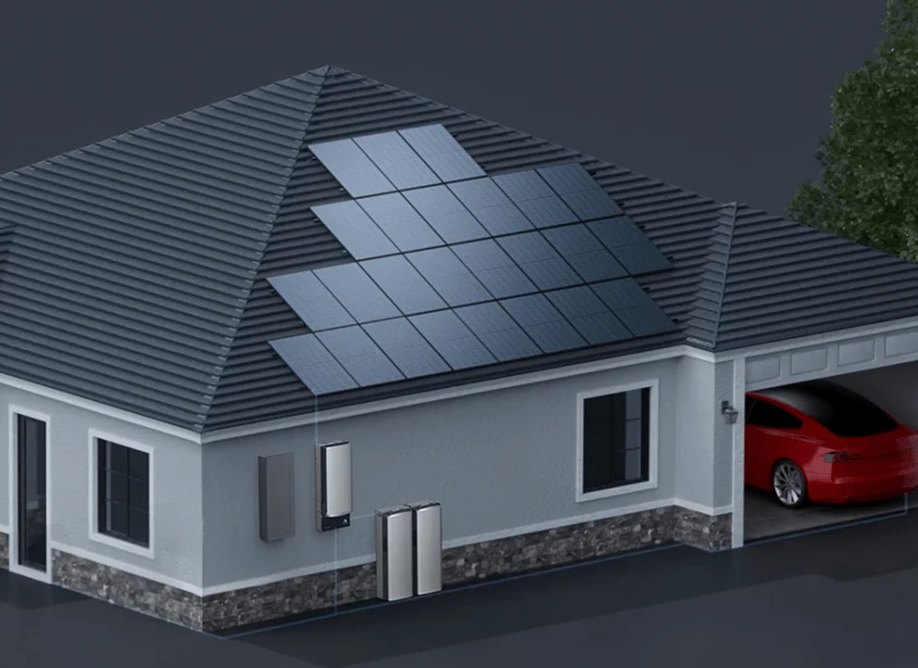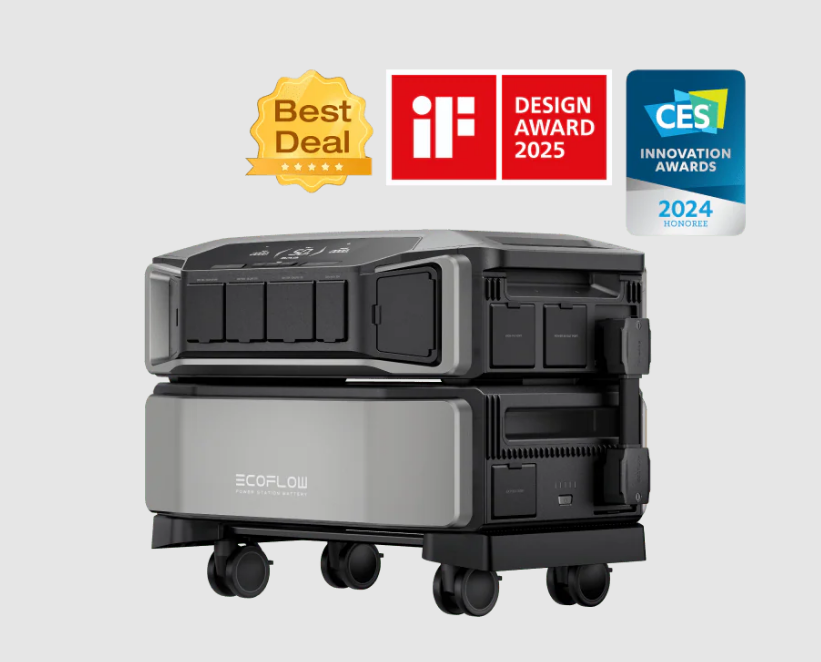Adding Batteries to Your Solar Setup: Here's How to Do It!
- Can You Add Some Batteries to Your Solar Array? Absolutely—Here's the Lowdown!
- What’s a Home Solar Battery, And Why Would You Want to Get One?
- Is It Possible to Retrofit Batteries Into an Existing Solar System?
- Step-by-Step Home Solar Battery Installation Guide
- Grid-Tied vs Off-Grid Setup Considerations
- How Much Does Adding a Solar Battery to Your Home System Cost?
- Best Practices for Battery Longevity
- Frequently Asked Questions Regarding Home Solar Battery Installation
- Conclusion: A Smarter, Safer Way to Power Your Home
Can You Add Some Batteries to Your Solar Array? Absolutely—Here's the Lowdown!
Yes, you can add batteries to your solar energy system—and in many instances, it's a sound and practical choice. Whether you're designing a brand-new system or upgrading an existing one, a home solar battery provides you with the capacity to save excess energy and utilize it when you need it most. This might be during power outages, nighttime, or when utility rates peak. With the proper equipment and well-considered installation, homeowners can achieve greater energy independence while minimizing long-term electricity expenses. Here's what you should know.
What’s a Home Solar Battery, And Why Would You Want to Get One?
A solar home battery saves the excess electricity your solar panels produce during the daytime for later use. Rather than feeding all your solar energy back into the grid, a battery enables you to save it for your personal consumption,especially useful in the event of outages or nighttime.
EcoFlow DELTA Pro Ultra provides 6–90kWh backup power, with up to 21.6kW output and 16.8kW solar input expandability. UL 9540 certified, it supports rooftop solar, portable panel, grid, and gas charging—perfect for whole-home energy storage and blackout protection. Various bundles and add-ons are available.
Here’s why installing one makes sense:
- Energy Independence: You have greater control over how and when you utilize energy, with less dependence on the utility company.
- Backup Power: In outage-prone areas, a battery can maintain the operation of crucial appliances and electronics.
- Lower Costs: You can use power from your battery during peak pricing times instead of paying a premium utility rate.
Most newer systems use lithium-ion batteries, which are efficient, compact, and long-lived. Lead-acid batteries are also still an option and might be cheaper up front, though they're less efficient and bulkier.
If you reside in an area where time-of-use billing, frequent power outages, or a higher level of energy independence is a goal, then a home solar battery is a sound investment.


Is It Possible to Retrofit Batteries Into an Existing Solar System?
Yes, you can—but it's a function of your existing system's design.
If your solar installation is relatively new, it likely includes a hybrid inverter or is "battery -ready" already. In those cases, adding a battery is typically a breeze. However, with older systems, you may have to upgrade things, such as adding an additional inverter or rewriting some wiring.
There are two primary integration techniques:
- DC-Coupled Systems: These are directly connected to the solar array, storing energy prior to its passage through the inverter. They're efficient but generally simpler to install at the time of original system construction.
- AC-Coupled Systems: These connect to your house's AC panel and have their own inverter. They're really convenient for retrofitting since they don't require significant alterations to the original system.
Your installer will assess the age of your system, inverter model, current net metering situation, and local regulations to determine the best course of action to recommend.
Step-by-Step Home Solar Battery Installation Guide
If You're Starting from Scratch
- Evaluate Your Power Requirements: Decide if you need backup for the entire house or only critical circuits. This will inform your battery capacity.
- Select Your Equipment: Pick a battery, a hybrid inverter, and other major components such as disconnects and transfer switches.
- Apply for Permits: You will require a go-ahead from your local permitting authority and maybe your utility.
- Installation: Licensed professionals will install the battery, connect it to your electrical panel, and handle the system configuration.
- Inspection and Start-Up: Once you've passed inspections, your system goes live. Most installations feature mobile apps or web portals to track performance.
If You're Adding to an Existing System
Step 1: Review System Compatibility
An installer will examine your panels, inverter, and system design to figure out what is required.
Step 2: Battery Selection
Select from small wall-mounted batteries or larger modular systems. Seek out UL certification and integrated monitoring capabilities.
Step 3: Select the Coupling Type
The majority of retrofits employ AC coupling due to the flexibility and simplicity of integration.
Step 4: Install the Battery and Associated Hardware
Technicians install the unit, rewire, and maybe replace the inverter.
Step 5: Final Setup and Testing
After inspection, the system is activated. You are able to monitor usage, charge levels, and performance via your battery's digital dashboard.
Grid-Tied vs Off-Grid Setup Considerations
Grid-Tied with Battery Backup
This is the most typical configuration. Your house remains grid-tied, but the battery acts as backup and a money-saving mechanism. The battery powers essential circuits during outages, provided that your inverter can handle backup mode. Excess energy can be sold back to the grid by some systems.
Off-Grid Systems
These function completely independently of a utility connection. Your battery and solar panels have to supply all of your household energy requirements. This takes a larger storage capacity, more sophisticated load management, and usually a backup generator. Off-grid systems are more complicated and are usually employed in remote or rural locations.
How Much Does Adding a Solar Battery to Your Home System Cost?
The overall expense of a residential solar battery system varies based on capacity, local labor costs, and hardware choices.
- Battery Cost: $400–$900 per kilowatt-hour (kWh), based on brand and features
- Installation Labor and Materials: $1,000–$3,000
- Permitting and Inspections: $200–$800
Federal incentives can largely defray these expenses. With the current Investment Tax Credit (ITC), homeowners can subtract 30% of the total cost—battery included—from their federal taxes. A few states and local utilities provide rebates or financing in addition.
Estimated Cost Scenarios:
- A 5 kWh battery system: $6,000–$7,000 pre-tax credits
- A 10 kWh battery for whole-home backup: $12,000–$15,000 prior to incentives


Best Practices for Battery Longevity
If you wanna make your home solar battery last longer, check out these tips:
Installation Location: Select a dry, well-ventilated, temperature-controlled area such as a garage. Do not expose outdoors whenever possible.
Avoid Deep Discharge: Don’t let the battery fully drain. Most systems are programmed to protect against this, but it’s still important to monitor.
Use Monitoring Tools: Utilize your battery's app or dashboard to monitor usage patterns and performance.
Always keep your firmware updated: It keeps your system running efficiently and securely.
Under good care, lithium-ion batteries usually live for 10–15 years, or approximately 4,000 to 6,000 cycles.
Frequently Asked Questions Regarding Home Solar Battery Installation
Q1. Do I have to change my inverter to install a battery?
Not always. If you already have a hybrid inverter that is storage-compatible, you're good to go. If your existing inverter is not compatible, you might have to install a second inverter (AC coupling) or replace it with a new unit that can handle both solar input and battery storage.
Q2. Can I DIY a home solar battery?
It's possible, but highly advised against. These systems include high-voltage wiring and are subject to building codes and utility regulations. A professional installer makes your system safe, code-compliant, and incentive-eligible. DIY installations may lead to failed inspections or safety risks.
Q3. How much storage do I really require?
That varies with the amount of your home you wish to back up. A 5–10 kWh battery will run crucial appliances and lights for 8–12 hours. For whole-home backup or off-grid systems, 15–30 kWh or more may be necessary. Your installer can help size the system based on your daily use.
Q4. Will the battery work automatically during a blackout?
Yes—if your system is set up for backup. Backup-capable inverters will sense grid outages and switch to battery power nearly instantaneously. Ensure your system has this capability if you need uninterrupted power during outages.
Conclusion: A Smarter, Safer Way to Power Your Home
Including a home solar battery makes your solar panels into an actual energy management system. Rather than simply generating power when the sun is present, your system can store energy, keep your home operational during outages, and save you from increasing utility prices.
Whether you're designing a new installation or retrofitting what you have, a properly selected battery is a solid, long-term investment in your home's resilience and your own peace of mind. With improving incentives, improved technology, and mounting energy uncertainty, there's never been a better time to bring storage into your solar installation.